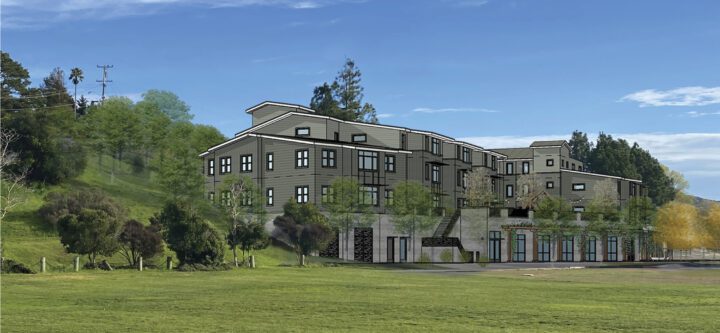Posted on: July 17, 2023
Marin Voice: Mill Valley needs affordable housing now, wherever it fits

The residents near Hauke Park in Mill Valley may have “Black Lives Matter” signs on their lawns, but do they realize they are fighting against creating a more diverse community?
These residents live in one of the wealthiest and most White towns in Marin, the sixth wealthiest county in the United States. Their children attend some of the best public schools. They live in the healthiest county in the state with the longest life spans. They are among the most privileged in the country.
However, a small group of residents, Friends of Hauke Park, have decided to sue the city for violating the state’s directive of affirmatively furthering fair housing (AFFH) over the 1 Hamilton affordable housing project proposal. This 45-unit project is a small step toward Mill Valley meeting its sixth cycle mandated allotment of 413 low and very low income units.
These residents argue that the proposed development at 1 Hamilton violates AFFH by locating the affordable housing within their Census Tract 1262, which is somewhat lower income and more diverse than Mill Valley as a whole. Only in Marin could you find people willing to argue that they are disadvantaged due to having a median income of “only” $124,000 and that they have a diverse community because “only” 70% of the residents are White.
Census Tract 1262 is essentially the median census tract for Marin, which also has 70% White residents and a median income of $127,000. It is classified as a “highest resource” census tract, due to outstanding schools and health outcomes. This is not an impoverished community that is being targeted for affordable housing.
Placing a 45-unit affordable housing project in the median census tract in Marin does not create or exacerbate segregation. To be clear, excluding Census Tract 1262 from the obligation to provide affordable housing is just as sensible as saying that placing affordable housing in Marin County violates AFFH because the folks in Santa Clara are somewhat wealthier than we are. Or saying that Mill Valley shouldn’t provide any affordable housing at all because Ross is wealthier. AFFH does not limit housing to only the wealthiest communities.

An architectural rendering shows a affordable housing project proposed at 1 Hamilton Drive in Mill Valley. It would have 45 homes. (Rendering by Van Meter Williams Pollack LLP)
![]() This 45-unit project is just the beginning of Mill Valley’s affordable housing commitment. To meet its mandatory housing allotment, Mill Valley will need the equivalent of eight more projects of similar size.
This 45-unit project is just the beginning of Mill Valley’s affordable housing commitment. To meet its mandatory housing allotment, Mill Valley will need the equivalent of eight more projects of similar size.
Most of the additional 368 affordable units are targeted outside of Tract 1262. While it is true that Mill Valley is not planning for affordable housing units to be provided high in the hills, these are very high fire risk areas. We should not be densifying these areas.
This is not to say that AFFH violations are impossible within Marin County. AFFH can be an issue if affordable housing is added in racially or ethnically segregated areas such as Marin City or the Canal neighborhood.
Mill Valley has no such areas. Affordable housing anywhere in Mill Valley improves the integration of Marin County overall.
While Mill Valley residents squabble about the placement of 45 affordable units, we have a housing crisis now. We take years to approve small development projects, and litigation like the AFFH lawsuit extends development time and increases costs, sometimes beyond the breaking point. This is often the goal of such litigation.
Meanwhile, we have an enormous unhoused RV encampment outside Novato, with many working homeless. Our schools are struggling to recruit teachers and staff, despite some of the highest pay rates in the state. Our children are forced to leave the communities they grew up in after graduating from high school.
We can’t spend years debating every 45-unit affordable project if we wish to solve our housing crisis.
Marin County jurisdictions have enacted zoning laws and permitting policies that have essentially blocked the development of housing for years. Less than 5% of Mill Valley’s housing stock has been built since 2000.
It now feels abnormal to build, but this is not normal. Historically, economically successful communities, such as Marin, grow with their population to accommodate their children and workforce. Our refusal to build is the cause of our housing crisis. It’s time to stop fighting and start building.
Jennifer Silva, of Sausalito, is board chair for the Marin Environmental Housing Collaborative.
Posted in: News